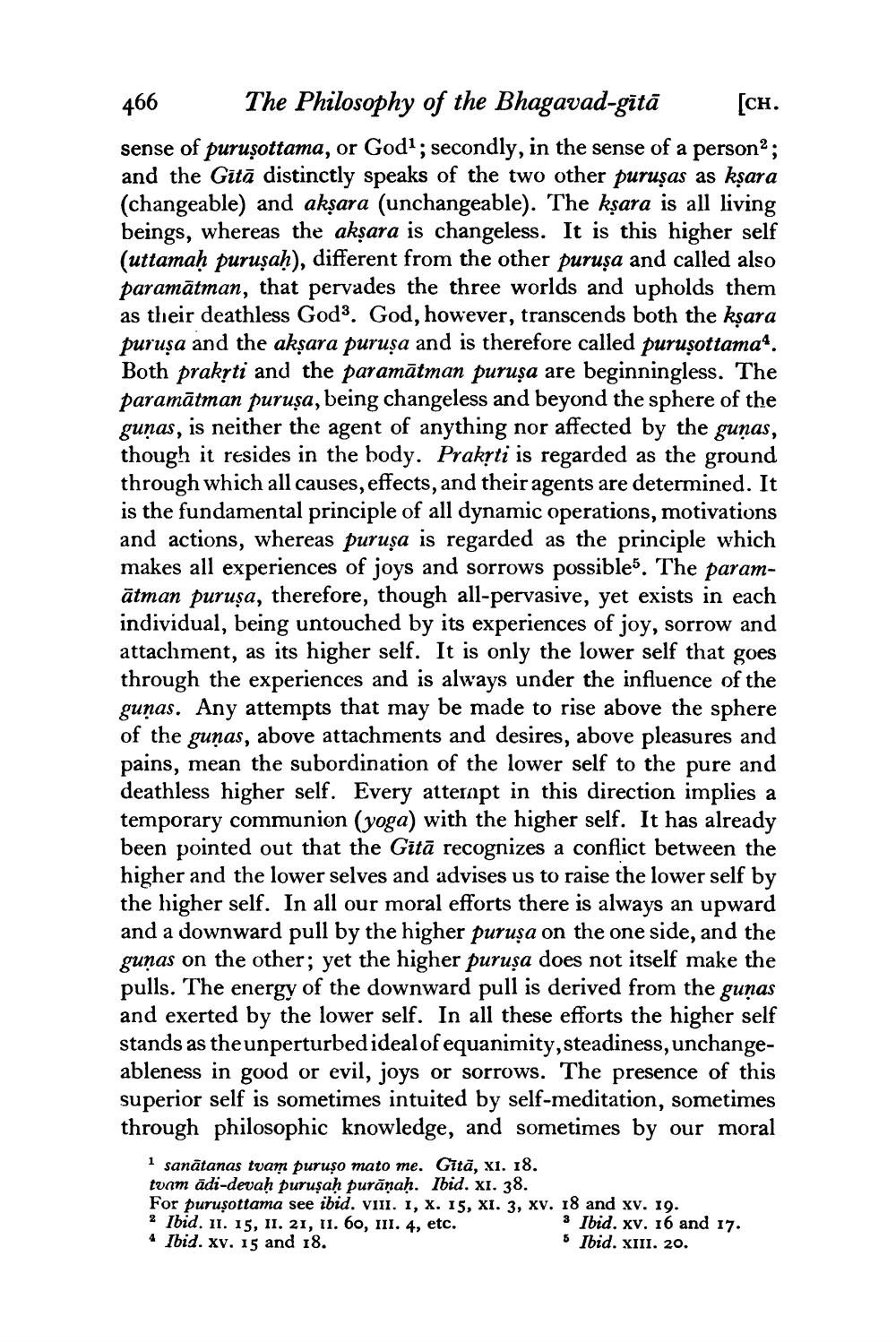________________
466
The Phil
The Philosophy of the Bhagavad-gītā [CH. sense of purusottama, or God"; secondly, in the sense of a persona; and the Gītā distinctly speaks of the two other puruşas as kşara (changeable) and aksara (unchangeable). The kşara is all living beings, whereas the aksara is changeless. It is this higher self (uttamaḥ puruṣaḥ), different from the other purușa and called also paramātman, that pervades the three worlds and upholds them as their deathless God. God, however, transcends both the kşara puruşa and the akşara puruşa and is therefore called purusottama*. Both prakyti and the paramātman puruşa are beginningless. The paramātman puruşa, being changeless and beyond the sphere of the guņas, is neither the agent of anything nor affected by the gunas, though it resides in the body. Prakyti is regarded as the ground through which all causes, effects, and their agents are determined. It is the fundamental principle of all dynamic operations, motivations and actions, whereas puruşa is regarded as the principle which makes all experiences of joys and sorrows possibles. The paramātman puruṣa, therefore, though all-pervasive, yet exists in each individual, being untouched by its experiences of joy, sorrow and attachment, as its higher self. It is only the lower self that goes through the experiences and is always under the influence of the guņas. Any attempts that may be made to rise above the sphere of the guņas, above attachments and desires, above pleasures and pains, mean the subordination of the lower self to the pure and deathless higher self. Every atternpt in this direction implies a temporary communion (yoga) with the higher self. It has already been pointed out that the Gitā recognizes a conflict between the higher and the lower selves and advises us to raise the lower self by the higher self. In all our moral efforts there is always an upward and a downward pull by the higher puruṣa on the one side, and the gunas on the other; yet the higher puruşa does not itself make the pulls. The energy of the downward pull is derived from the gunas and exerted by the lower self. In all these efforts the higher self stands as theunperturbed idealof equanimity, steadiness, unchangeableness in good or evil, joys or sorrows. The presence of this superior self is sometimes intuited by self-meditation, sometimes through philosophic knowledge, and sometimes by our moral
1 sanātanas tvam puruso mato me. Gitā, xi. 18. tvam ādi-devah puruṣaḥ puränah. Ibid. XI. 38. For puruşottama see ibid. VIII. I, X. 15, XI. 3, xv. 18 and xv. 19. 2 Ibid. 11. 15, 11. 21, 11. 60, III. 4, etc.
3 Ibid. xv. 16 and 17. 4 Ibid. xv. 15 and 18.
5 Ibid. XIII. 20.




